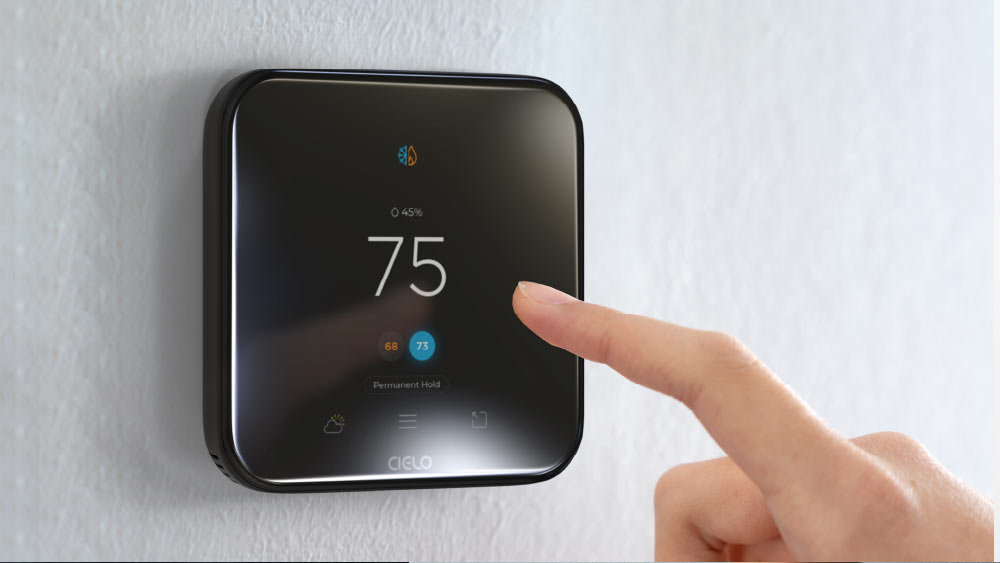
Key Takeaways
- A thermostat deadband is the temperature range within which neither the heating nor the cooling operates.
- It prevents frequent cycling, reducing strain on your system.
- A wider deadband can lead to energy savings, while a narrower deadband maintains a more consistent temperature.
Spring and fall seasons are known for their unpredictable temperature variations. The mercury rises during the day only to plummet sharply at night. This causes you to constantly switch between heat and cool modes, which not only wastes energy but also strains your system.
To solve this issue, smart thermostats have added a deadband temperature range which is a buffer zone that prevents your thermostat from constantly switching on and off in response to minor temperature fluctuations.
Let’s explore the thermostat deadband in detail, its range, and how you can adjust it on your thermostat.
How Does Thermostat Deadband Work?
The thermostat deadband refers to the temperature range within which the device does not activate the heating or cooling system. In other words, it’s the gap between when the thermostat turns off the system and when it turns back on again. It is also known as the maintenance band, temperature differential, or temperature swing. This temperature range is factory-set and usually ranges from 2F to 10F.
The deadband works like this: Suppose you have set your thermostat to 72F. The deadband range is 4 degrees. In this case, the heating system will turn off after achieving this temperature and will turn back on when the home temperature drops to 70F. In summer, the cooling system will activate when the temperature rises to 74F.
The deadband helps prevent frequent cycling of the heating or cooling system, which can help save energy and reduce equipment wear and tear.
Equip your HVAC system with smart features and achieve the perfect balance between comfort & savings.
Learn more
Longer Deadband vs. Shorter Deadband
A longer deadband increases the duration during which your HVAC system remains idle, thereby promoting energy conservation. However, if the deadband is too wide, your system will remain switched off for a longer period, which can affect the comfort of your household occupants, especially the elderly.
Related: The Ideal Room Temperature for Every Situation & 7 Ways to Maintain It!
A shorter deadband ensures that the HVAC system reacts promptly when the temperature deviates even slightly from the setpoint, maintaining a more consistent indoor environment.
While the deadband range can be modified, most manufacturers do not make it easily accessible. Consult your thermostat manual for instructions on altering its deadband range. You will have to go into configuration mode to make changes. Reducing the range below the factory level is not recommended to avoid unwanted heating or cooling cycles.
You can aim for a 2-4 degree deadband to strike a balance between comfort and efficiency. However, the best setting for you might depend on factors like your climate, home insulation, and personal preferences.
In recent years, mini-split heat pumps have become increasingly popular in the US. However, homeowners are encountering challenges when transitioning from traditional central HVAC systems. While both systems regulate indoor temperature, they differ in how they operate, causing consistency issues.
Plus, mini-splits may have longer deadbands, which can make it difficult to maintain your desired settings. Comfy Max has been developed to ease this transition. It’s a revolutionary feature in Cielo Breez Max, a smart thermostat for mini-splits.
This feature intelligently activates your AC when the room temperature exceeds or falls below your specified limits, even if it’s a 1-degree change. This ensures your desired settings are maintained while preventing overheating or overcooling.
Related: Mini-Split vs Central Air Conditioner: Which Type Is Best Suitable for Your Home?
Your best choice to make any mini-split, window,
or portable AC smart. Enhance your comfort and savings.

The Takeaway
The thermostat deadband is the temperature range where your system remains inactive. It prevents unnecessary cycling of the heating and cooling systems, thereby saving energy and reducing wear and tear on your HVAC equipment. The deadband can range from 2 to 10 degrees. While a longer deadband promotes energy conservation, it’s essential to consider the comfort of household occupants. You should aim for a range that maintains a consistent indoor environment without sacrificing efficiency. You can adjust the deadband provided your thermostat manufacturer has given this option.








